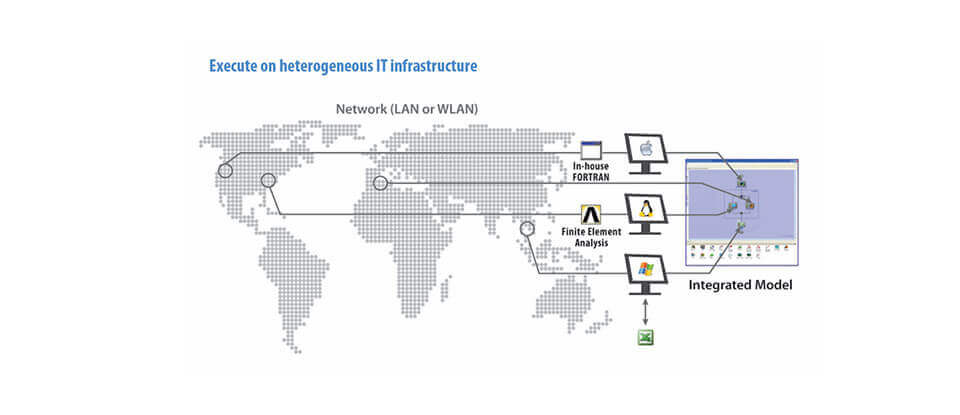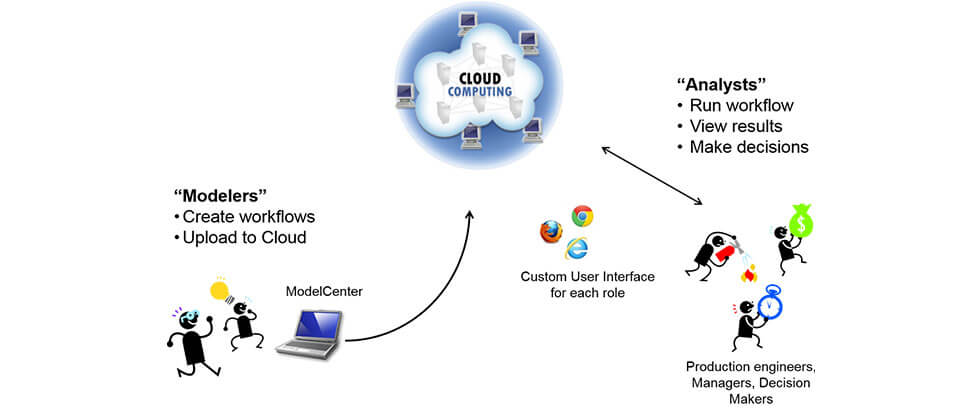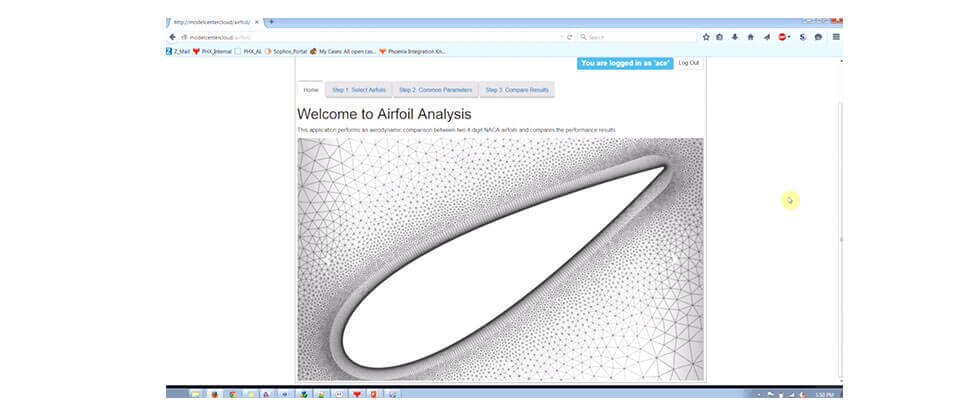ModelCenter Enables Distributed Engineering
As products become more complex and design teams more distributed, collaboration between teams and organizations becomes a necessity. To improve the efficiency of their processes, organizations are beginning to share models and workflows, not just within and across departments, but also up and down the supply chain.
ModelCenter enables Distributed Engineering in two ways – ModelCenter Remote Execution and Cloud Computing.
1. ModelCenter Remote Execution
ModelCenter makes model sharing possible without exposing proprietary information or valuable intellectual property (IP).
- Once a model or workflow has been automated, engineers can use ModelCenter to publish it on the network so that team members and partners in the supply chain can execute it or include it in their own workflow.
- The intellectual property contained in the published workflow remains protected. The only information exchanged with external users are the values of the input and output variables.
2. ModelCenter Cloud Deployment
ModelCenter workflows can be uploaded to central server where approved users can access and execute them directly from a web browser
- A ModelCenter Cloud deployment consists of one or more ModelCenter desktop users (“Modelers”) along with a central server supporting any number of web based users (“Analysts”). ModelCenter can be deployed on public or private clouds.
- Modelers automate analyses and build workflows using the desktop version of ModelCenter. They can upload these workflows to the ModelCenter Cloud Server so that others in the organization can see them, execute them, and view the results – all from a web browser.
- Analysts can access the workflows using web interfaces that are customized for their job. Custom user interfaces allow non-experts to safely execute approved engineering workflows and assure that the entire team is using the same workflow and the correct data.


